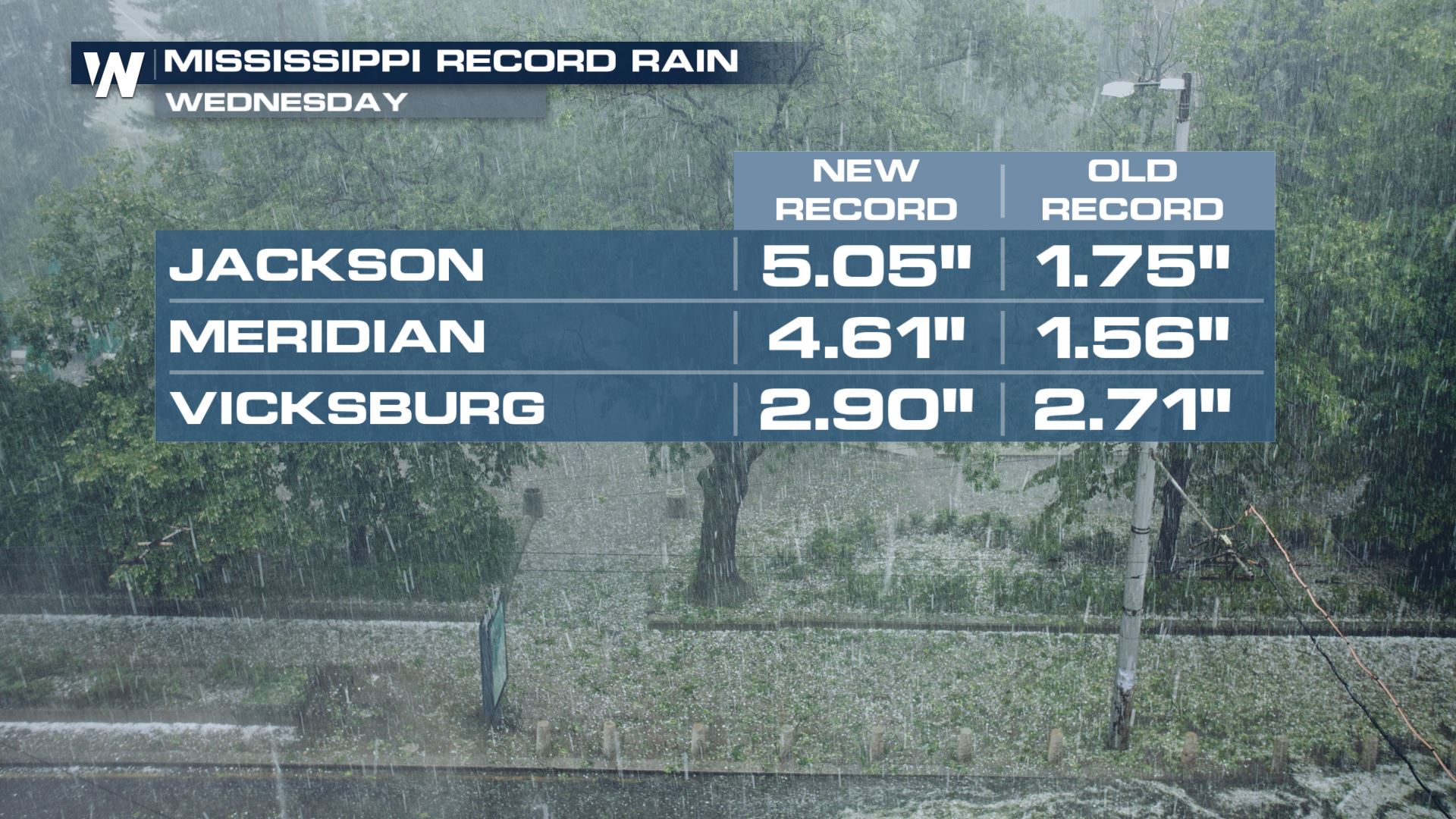Navigating Flash Flood Emergencies: A Practical Handbook

Table of Contents
Understanding Flash Flood Risks
Flash flood preparedness begins with understanding the risks specific to your area. Knowing your vulnerability is the first step in effective mitigation.
Identifying High-Risk Areas
Certain geographical locations are inherently more prone to flash floods than others. Understanding these high-risk areas is crucial for proactive planning.
-
Geographical Factors: Mountainous regions, areas with poor drainage systems, and those situated near rivers, streams, or canyons are particularly susceptible to flash flooding. The steep terrain in mountainous areas allows for rapid water runoff, while poor drainage prevents the efficient absorption of rainwater. Proximity to water sources significantly increases the risk of inundation during periods of heavy rainfall.
-
Contributing Factors: Intense and prolonged rainfall, rapid snowmelt in spring, and dam failures can all trigger devastating flash floods. These factors overwhelm natural drainage systems, leading to rapid and often unpredictable rises in water levels.
-
Assessing Your Risk:
- Check local flood maps: Many municipalities provide detailed flood maps online indicating areas with a high probability of flooding.
- Review historical flood data: Research past flood events in your area to understand the frequency and severity of past flash floods. This information helps gauge your personal risk.
- Understand your property's vulnerability: Evaluate the elevation of your property relative to nearby water sources and drainage systems. Consider the materials used in your home's construction and its resistance to flood damage.
Recognizing Flash Flood Warning Signs
Recognizing the early warning signs of an impending flash flood is critical for timely evacuation and response.
-
Visual Cues: Rapidly rising water levels in rivers, streams, or normally dry areas are major warning signs. Overflowing rivers and streams, strong currents, and debris carried by the water indicate a significant increase in water volume. Observe changes in water color and clarity; muddy or unusually discolored water may indicate upstream flooding.
-
Audible Warnings: Pay close attention to official warnings. Emergency sirens, weather alerts on your phone, and news reports are crucial sources of information. Local authorities will often issue warnings and evacuation orders well in advance of a flash flood.
-
Other Indicators: Listen carefully for the sound of heavy and persistent rainfall. Be particularly alert during periods of intense storms or rapid snowmelt. Changes in water flow, such as a sudden increase in the speed or volume of a stream, are key indicators of an impending flash flood. Heed any warnings from official sources, even if the rain doesn't seem excessively heavy.
Preparing for Flash Flood Emergencies
Proactive preparation is key to minimizing the impact of a flash flood. A well-defined plan and the right supplies can make a world of difference.
Developing a Family Emergency Plan
A comprehensive family emergency plan is essential for efficient evacuation and reunification during a flash flood.
-
Evacuation Routes and Meeting Points: Identify multiple escape routes from your home and designate a safe meeting point outside the flood-prone area. Consider several options in case one route is blocked.
-
Essential Supplies: Assemble an emergency kit that includes:
- First-aid kit with essential medications
- Several gallons of potable water per person
- Non-perishable food items (enough for several days)
- Flashlight with extra batteries
- Battery-powered radio
- Waterproof container for important documents (insurance policies, IDs, etc.)
-
Plan Practice and Education: Practice your evacuation plan regularly, especially with children. Teach family members the importance of heeding warnings and knowing what to do during a flash flood. Keep important documents in a waterproof, easily accessible location.
Protecting Your Property
While you can't completely prevent flood damage, taking preventative measures can significantly reduce the impact.
-
Minimizing Damage:
- Elevate electrical appliances and valuable items to higher ground.
- Clear gutters and drains regularly to ensure efficient water drainage.
- Install flood barriers to protect doors and windows.
- Reinforce basement walls to prevent water seepage.
-
Flood Insurance: Consider purchasing flood insurance, especially if you live in a high-risk area. Standard homeowner's insurance policies typically do not cover flood damage.
Responding to a Flash Flood Emergency
Timely and effective response is crucial during a flash flood emergency.
Evacuation Procedures
Immediate evacuation is paramount upon receiving a flash flood warning.
-
Prioritize Safety: Do not delay evacuation. Flash floods can develop rapidly and become life-threatening within minutes.
-
Safe Evacuation Routes: Use your pre-planned evacuation routes and avoid low-lying areas. If possible, use a vehicle to evacuate, but be prepared to abandon it if necessary.
-
Shelter: Seek shelter in a sturdy building on higher ground. Avoid seeking shelter in underground spaces or structures that are prone to flooding.
-
Never drive through floodwaters: The depth of water is often deceptive, and even a small amount of water can sweep a vehicle away.
Staying Safe During a Flash Flood
Floodwaters pose numerous dangers. Staying informed and taking appropriate precautions is crucial for survival.
- Avoid Contact with Floodwaters: Floodwaters are often contaminated with sewage, chemicals, and debris. Contact with floodwater can lead to serious illness or injury.
- Seek Higher Ground: Move to the highest ground possible as quickly and safely as possible.
- Stay Informed: Continuously monitor weather reports and emergency broadcasts for updates on the situation.
- Avoid Downed Power Lines: Downed power lines pose a severe electrical hazard. Report them immediately to the authorities and avoid approaching them.
Conclusion
This handbook has provided essential information for navigating flash flood emergencies. By understanding the risks, preparing proactively, and responding effectively, you significantly improve your chances of staying safe during a flash flood. Remember, preparedness is key to mitigating the impact of flash flood emergencies. Download your local flood maps and create a comprehensive flash flood emergency plan today. Don't wait until it's too late to learn how to navigate flash flood emergencies effectively.

Featured Posts
-
 Claire Williams Actions Towards George Russell Public Reaction And Analysis
May 26, 2025
Claire Williams Actions Towards George Russell Public Reaction And Analysis
May 26, 2025 -
 Is Kiefer Sutherland Joining This Project Fans React
May 26, 2025
Is Kiefer Sutherland Joining This Project Fans React
May 26, 2025 -
 Court Rejects Trumps Claims Against Top Law Firms
May 26, 2025
Court Rejects Trumps Claims Against Top Law Firms
May 26, 2025 -
 D C Pride 2024 A Comprehensive Guide To Events And Activities
May 26, 2025
D C Pride 2024 A Comprehensive Guide To Events And Activities
May 26, 2025 -
 The Undervalued Asset How Middle Managers Drive Business Results And Employee Engagement
May 26, 2025
The Undervalued Asset How Middle Managers Drive Business Results And Employee Engagement
May 26, 2025
